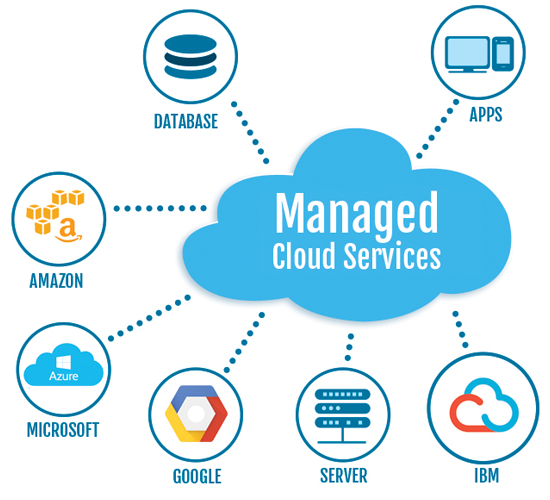Boost Your Organization with LinkDaddy Cloud Services: Letting Loose Universal Cloud Service Potential
Boost Your Organization with LinkDaddy Cloud Services: Letting Loose Universal Cloud Service Potential
Blog Article
Simplify Your Facilities With Cloud Solutions
As services browse the ever-evolving landscape of technology and data management, the duty of cloud solutions in simplifying framework has actually become increasingly famous. The attraction of structured processes, improved efficiency, and boosted source allotment through cloud solutions is obvious. The trip towards a much more active and economical IT framework includes even more than just migrating to the cloud. It calls for a calculated method and a deep understanding of the nuances of cloud fostering. Just how can services properly browse this shift and absolutely unlock the capacity of cloud services for streamlining their facilities?
Advantages of Cloud Solutions
Cloud solutions provide a structured strategy to handling IT framework, supplying services with scalability, cost-efficiency, and adaptability. One of the essential advantages of cloud solutions is the scalability they supply.
In addition, cloud services eliminate the demand for businesses to buy costly hardware and software program. This cost-efficiency is a considerable advantage, especially for tiny to medium-sized enterprises aiming to lessen in advance prices. By utilizing cloud services, businesses can access premium IT resources without the large price tag linked with conventional framework configurations.
Moreover, cloud services give services with the adaptability to access their data and applications from anywhere with a web connection. This level of availability boosts cooperation among teams, allows remote job, and boosts overall efficiency. The versatility supplied by cloud solutions encourages businesses to adapt rapidly to altering market conditions and client demands.
Expense Cost Savings and Scalability
In enhancement to the operational benefits highlighted earlier, the integration of cloud solutions right into a firm's infrastructure produces significant cost financial savings and boosted scalability. Cloud solutions provide a pay-as-you-go version, permitting organizations to range resources up or down based upon existing demands, therefore avoiding the expenses associated with maintaining excess ability. This flexibility makes it possible for business to adapt swiftly to changing needs without sustaining unnecessary expenses.
Moreover, cloud services eliminate the need for upfront investments in software and hardware, reducing capital investment. Operating budget are likewise decreased as firms no more need to manage and keep physical web servers, causing lower power usage and IT staffing prices. Furthermore, cloud services give automated updates and upkeep, guaranteeing that the infrastructure continues to be safe and secure and updated without requiring hand-operated treatments.
Boosted Security Procedures
Executing rigorous security actions is extremely important when incorporating cloud services into a business's framework to guard delicate information and ensure compliance with market regulations. Cloud service providers offer boosted safety attributes such as data encryption, firewall defense, and multi-factor verification to minimize cybersecurity dangers.
Additionally, normal safety audits and compliance evaluations aid ensure and identify susceptabilities adherence to market criteria. Firms can likewise take advantage of functions like automated security updates and real-time danger monitoring given by cloud company. By focusing on safety and security measures and staying aggressive in resolving potential dangers, businesses can with confidence utilize cloud services while securing their valuable data from unauthorized gain access to or violations.
Transitioning to Cloud Infrastructure
To efficiently incorporate cloud services into a firm's infrastructure, a structured technique that attends to the shift in the direction of cloud-based options is necessary. Transitioning to cloud facilities entails mindful planning and execution to make sure a smooth movement process. The initial action is to assess the present read this article framework and identify which applications and systems appropriate for movement to the cloud. This evaluation must take into consideration factors such as data sensitivity, conformity requirements, and performance needs.
When the analysis is total, a migration method need to be created. This method must detail the timeline, sources, and obligations for moving each component to the cloud. It is essential to interact this strategy plainly to all stakeholders to guarantee alignment and minimize interruptions throughout the transition.
During the migration tracking, testing and procedure are vital to recognize and address any kind of problems without delay. Routine checkpoints ought to be established to track development and make essential changes. Furthermore, training for employees on making use of cloud services should be offered to ensure an effective transition and maximize the advantages of the new framework.
Finest Practices for Cloud Adoption
Effective adoption of cloud solutions pivots on the calculated positioning of business goals with technical abilities and organizational preparedness. To guarantee a smooth change to the cloud, organizations must start by performing an extensive analysis of their existing framework and determining which work are best matched for cloud migration. It is critical to include vital stakeholders from different departments in the decision-making procedure to gain buy-in and address any kind of issues early.
Another finest technique for cloud fostering is to prioritize safety and compliance. Organizations should very carefully review the security procedures used by cloud provider and ensure that their data is secured according to sector criteria and regulatory demands. Implementing robust data encryption, gain access to controls, and normal security audits can help mitigate risks related to cloud fostering.

Verdict

As visit this site right here businesses navigate the ever-evolving landscape of modern technology and data management, the function of cloud solutions in simplifying infrastructure has ended up being significantly prominent - cloud services press release. How can companies successfully browse this change and really open the possibility of cloud solutions for streamlining their framework?
Cloud solutions provide a structured strategy to handling IT framework, offering companies with versatility, cost-efficiency, and scalability. By utilizing cloud services, organizations can access premium IT resources without the large cost tag connected with typical framework setups.
To make sure a smooth shift to the cloud, organizations ought to start by performing a comprehensive analysis of their current facilities and determining which work are best matched for cloud movement.
Report this page